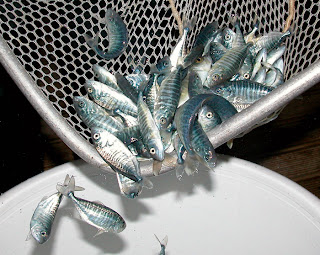State of world aquaculture 2011
 Overview
OverviewAquaculture continues to be the fastest growing animal food-producing sector and to outpace population growth.
Per capita supply from aquaculture increased from 0.7 kg in 1970 to 7.8 kg in 2006, an average annual growth rate of 6.9 percent. It is set to overtake capture fisheries as a source of food fish. From a production of less than 1 million tonnes per year in the early 1950s, production in 2006 was reported to be 51.7 million tonnes with a value of US$78.8 billion, representing an annual growth rate of nearly 7 percent.
Regional growth of aquaculture
Production within each region is diverse. World aquaculture is heavily dominated by the Asia–Pacific region, which accounts for 89 percent of production in terms of quantity and 77 percent in terms of value. This dominance is mainly due to China’s enormous production, which accounts for 67 percent of global production in terms of quantity and 49 percent of global value. China produces 77 percent of all carps (cyprinids) and 82 percent of the global supply of oysters (ostreids). The Asia–Pacific region accounts for 98 percent of carp, 95 percent of oyster production, and 88 percent of shrimps and prawns (penaeids). Norway and Chile are the world’s two leading producers of cultured salmons (salmonids), accounting for 33 and 31 percent, respectively, of world production.
Global outlook
Aquaculture is developing, expanding and intensifying in almost all regions of the world, except in Sub-Saharan Africa, as the global population demand for aquatic food products is expected to increase. Globally, production from capture fisheries has leveled off and most of the main fishing areas have reached their maximum potential. Sustaining fish supplies from capture fisheries will, therefore, not be able to meet the growing global demand for aquatic food.
According to FAO projections, it is estimated that in order to maintain the current level of per capita consumption, global aquaculture production will need to reach 80 million tonnes by 2050.

Aquaculture has the potential to make a significant contribution to this increasing demand for aquatic food in most regions of the world; however, in order to achieve this, the sector (and aqua-farmers) will face great challenges.
Aquaculture is making an important contribution to global production and a number of key development trends are taking place. It is apparent that the aquaculture sector continues to intensify and diversify, to use new species and modifying its systems and practices. Aquaculture is doing this with the growing awareness that it must be done through the responsible use of the resources upon which it depends and to society in general.
Markets, trade and consumption preferences, strongly influence the growth of the sector, with clear demands for production of safe and quality products. As a consequence, increasing emphasis is placed on enhanced enforcement of regulation and better governance of the sector. It is increasingly realized that this cannot be achieved without the participation of the producers in decision making and regulation process, which has led to efforts to empower farmers and their associations and move towards increasing self-regulation. These factors are all contributing towards improving management of the sector, typically through promoting “better management” practices of producers.
Aquatic plant production by aquaculture in 2006 was 15.1 million tonnes. The culture of aquatic plants has increased consistently, with an average annual growth rate of 8 percent since 1970. In 2006, it contributed 93 percent of the world’s total supply of aquatic plants, or 15.1 million tonnes (US$7.2 billion), some 72 percent of which was produced by China. However, growth rates for aquaculture production are slowing, partly owing to public concerns about aquaculture practices and fish quality. Genetically modified organisms (GMOs) remain a controversial issue. In response to these concerns, integrated multitrophic aquaculture (which promotes economic and environmental sustainability) and organic aquaculture are on the rise.





0 comments:
Post a Comment